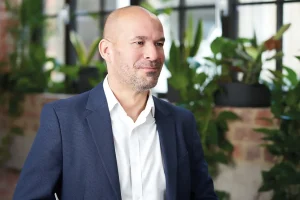How will our new built environment forum create a future-ready industry?
Posted on: 25 September, 2025

By Nick Perkins
Head of Built Environment Futures Assembly
The University of the Built Environment recently launched the Built Environment Futures Assembly (BEFA), a powerful leadership forum for the built environment sector.
Operating at the critical intersection of education and professional practice, its first steps involve asking some key questions: How do we close the gap between today’s workforce and the skills the sector will need in the future? How can we ensure that professionals across the built environment – from managers to designers, surveyors to constructors – are properly equipped to build future-facing capacity, capability and competency?
The disconnect conundrum
In the built environment sector today, a disconnect exists between current industry practices and the skills that tomorrow’s world will require. For example, many firms still rely on analogue processes and siloed team structures, even as digital transformation and climate goals accelerate change.
Watch a video outlining this topic from Mark Farmer, BEFA Chair and author of influential government reviews into built environment skills, ‘Modernise or Die’ and ‘Transforming the Construction Workforce’:
The current landscape vs emerging needs
Fragmented practices and cultural resistance to change have long hindered innovation. Decades of established methods, often driven by regulation and habit, stand on one side, while rapidly evolving demands stand on the other. This divide has created a blind spot at the intersection of education, modern practice, technological innovation and client needs.
On the current side, organisations often underplay new technologies due to comfort with familiar routines. On the future side, accelerating forces such as artificial intelligence, automation, sustainable construction and collaborative models are already reshaping the industry. These emerging needs are growing in influence, with the future is arriving faster than many realise.
This reality gap means employers today prioritise skills for immediate needs, while educators aim to prepare students for long-term shifts, but not necessarily using modern technologies. If unaddressed, such disconnects could leave the sector struggling to truly solve its skills gaps.

Mark Farmer, BEFA Chair, said: “A challenge is how we bridge the gap between current practice and the future…there is often a reality gap between what we want to train for and what we should train for.”
Proactively aligning with future drivers
Bridging the gap means actively aligning current skills and business models with emerging drivers, rather than playing catch-up later. A top priority is to modernise education and training.
Curricula must be updated to reflect new tools and sustainable practices, ensuring new graduates are equipped for digital methods, low-carbon construction and interdisciplinary teamwork.
For the existing workforce, upskilling is equally vital, so that professionals can confidently use advanced tools, such as AI-assisted design software or data analytics, instead of feeling threatened by them.
Another key step is to break down silos that isolate disciplines. Traditional fragmentation, whether between design and construction teams or between academia and industry, must give way to integrated, collaborative approaches.
Cross-disciplinary learning and joint initiatives among universities, employers and professional bodies will help the industry evolve in step with future demands.
Roles typically function in isolation
For example, consider how roles typically function in isolation throughout a building project. An architect’s involvement often tapers once design plans are completed and handed over for approval. Next, a planning consultant steps in to navigate the planning permission process, then usually bows out after securing the necessary approvals.
The project then passes to a developer who secures financing and manages overall delivery, before handing it over to a contractor to carry out the construction.
Each specialist’s role largely ends at their respective handover, with only minimal overlap or ongoing collaboration with the next party.
This sequential, segmented approach means that important context and original design intent can be diluted or lost as a project moves from one siloed stage to the next. It underscores why more integrated, collaborative models are needed to achieve better outcomes.
BEFA’s role in bridging the gap
This imperative of connecting the present to the future is exactly what BEFA was established to address. BEFA’s mission is to help bridge this gap by bringing industry leaders, educators and policymakers together to tackle key challenges through engagement, education and collaboration.
Find out more about BEFA’s mission
Looking ahead
The future of the sector depends on decisions made today to innovate in education and professional practice. By proactively tackling this gap now, the University of the Built Environment and BEFA aim to cultivate a resilient, future-ready industry.



